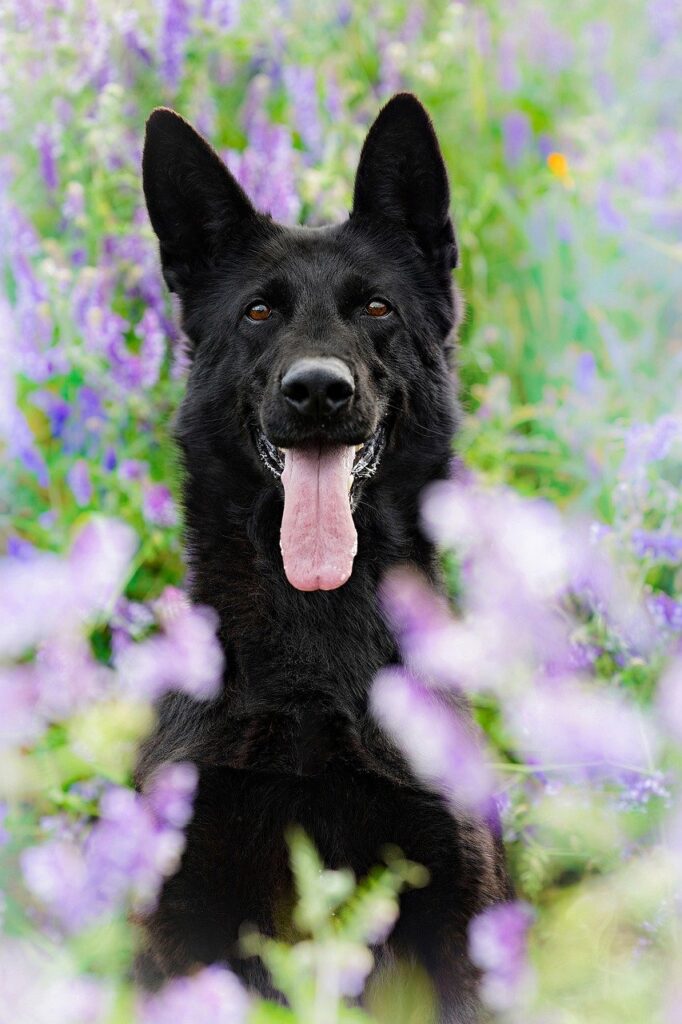Ah, the wonders of Spring in Texas: Bluebonnets, magnolia trees, redbuds. Color is returning to our great state but with the beauty comes the many (dreaded) pollen-producing plants. This is a topic that hits close to home for many of us: spring allergies. If you’re navigating this season while also caring for your furry companions, just know – we are right there with you.
As a proud pet parent myself, I understand the challenges that come with keeping our pets happy and healthy during allergy season. I’ve learned a thing or two about managing both my allergies and theirs during this vibrant season. So, grab a tissue, and your favorite allergy spray, and let’s chat about how to keep your four-legged pals happy and healthy this spring.
First things first, it’s essential to recognize the signs of allergies in your pets. Just like humans, pets can be allergic to various environmental factors such as pollen, grass, mold, and dust mites, which are more prevalent during the springtime. Common symptoms of allergies in pets include itching, scratching, sneezing, watery eyes, runny nose, and skin irritations. So, what to watch for? Increased weepiness, excessive scratching, skin redness, or hot spots (open skin wounds). Any of these could indicate an allergic reaction to pollen, grass, or other environmental allergens which are abundant in Texas during spring.
So, what can a pet owner do? One answer is grooming, particularly bathing and brushing. In the spring, your pup can return from a romp in the park covered in pollen, and before you know it, they’re scratching like there’s no tomorrow. A bath and brush will really help! A professional groomer can also be a good source of information, particularly during allergy season. Groomers have an incredible knack for spotting signs of allergies and other health issues that we might miss. They’re like the Sherlock Holmes of the pet world, scouring every nook and cranny for clues (or in this case, redness, irritation, and hot spots).
Here are some of the ways grooming and allergy management go hand-in-hand:
- Bathing: Regular bathing with a hypoallergenic shampoo can help remove allergens such as pollen, dust, and other environmental irritants from your dog’s coat and skin. Bathing can also soothe irritated skin and provide relief from itching.
- Brushing: Brushing your dog regularly helps remove loose fur, dander, and outdoor allergens trapped in the coat. It can also distribute natural oils throughout the fur, promoting healthier skin and coat.
- Trimming: Keeping your dog’s hair trimmed, especially around the ears, paws, and groin area can help prevent allergens from getting trapped in the fur and reduce the risk of skin irritation and infections.
- Ear Cleaning: Cleaning your dog’s ears regularly can help prevent buildup of wax, dirt, and moisture, which can contribute to ear infections. If your dog is prone to allergies and ear problems, ear hygiene becomes all the more important.
- Paw Care: Wiping your dog’s paws with a damp cloth after outdoor activities can help remove pollen, grass, and other allergens picked up from the ground. This can reduce the risk of your dog ingesting or spreading allergens throughout the house.

The next thing you can do is to practice good “environmental control.” You’ll improve the allergen environment inside your home by vacuuming frequently, washing bedding regularly, and using air purifiers to reduce airborne allergens indoors.
Addressing allergy symptoms in pets requires veterinary care as well. If you or your groomer notice any signs of allergies in your furry companion, such as excessive scratching, sneezing, or watery eyes, schedule a visit to the vet. Veterinarians can provide expert guidance on testing and treatment options, from allergy medications to specialized diets tailored to your pet’s needs, ensuring they can enjoy springtime in Texas to the fullest.
Spring would be a good time to get into action if you suspect a food allergy might be in play. Food allergies might manifest in several ways including itchy skin (around the face, ears, paws, and rear), chronic ear infections, head shaking, vomiting, gas and even bloating. By identifying and eliminating potential allergens from the diet, such as certain proteins or grains, you can alleviate some of the allergy burden on your pet’s immune system. Your vet might recommend an experiment with a limited ingredient diet, which can help identify and eliminate specific food triggers for allergies. These diets contain fewer ingredients, making it easier to pinpoint allergens and avoid them in the future.
As far as those ears go, it might not make sense that ear scratching could be related to spring allergies. If a dog is allergic to pollen, scratching its ears could be a secondary response rather than a direct allergic reaction to the pollen itself. Here’s how it can happen:

- Secondary Infections: Dogs with pollen allergies may experience inflammation in their ears due to the body’s immune response to the allergen. This inflammation can create an environment conducive to the growth of yeast or bacteria, leading to ear infections. The discomfort caused by the infection can prompt the dog to scratch at its ears to relieve the itchiness and discomfort.
- A self-perpetuating cycle of itchiness: Pollen allergies can cause generalized itching and irritation throughout the dog’s body, including the ears. Dogs may scratch at their ears in an attempt to alleviate the itchiness caused by the allergic reaction.
- Response to Environmental Irritants: Along with pollen, outdoor environments can contain other irritants such as dust, mold, or plant particles, which may exacerbate allergy symptoms in dogs. These irritants can literally settle in the ears, triggering itchiness and prompting the dog to scratch.
It’s important to note that scratching at the ears can also indicate other issues such as ear mites, infections unrelated to allergies, foreign objects in the ear canal, or anatomical abnormalities. If your dog is scratching its ears excessively or showing signs of discomfort, it’s best to have them examined by a veterinarian to determine the underlying cause and appropriate treatment.
As we embark on this journey through allergy season, let’s remember the vital role that grooming plays in keeping our pets healthy and happy. By partnering with skilled groomers who can identify allergy problems early on, we can ensure that our furry companions receive the care and attention they deserve, even amidst the sneezes and sniffles of spring.
So, here’s to embracing the joys of pet parenthood, from sun-drenched days in the great outdoors to cozy cuddles on the couch. Together, we’ll conquer spring allergies and celebrate the bond we share with our furry friends, one grooming session at a time. Happy grooming, y’all!











